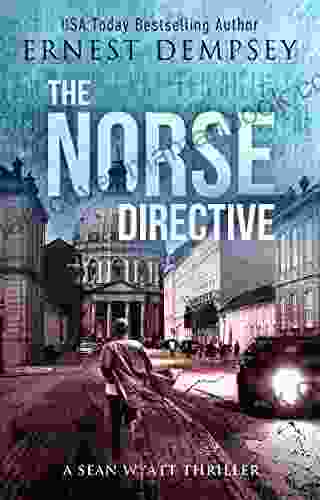The Development of the Sonnet: An Introduction

4.5 out of 5
| Language | : | English |
| File size | : | 507 KB |
| Text-to-Speech | : | Enabled |
| Screen Reader | : | Supported |
| Enhanced typesetting | : | Enabled |
| Print length | : | 256 pages |
The sonnet is a poetic form that has been used for centuries to express a wide range of emotions and ideas. It is a fourteen-line poem that follows a specific rhyme scheme and meter. The sonnet was originally developed in Italy in the 13th century, and it quickly became popular in England and other European countries. Some of the most famous sonnets in the English language were written by William Shakespeare, who used the form to explore themes of love, beauty, and mortality.
The Origins of the Sonnet
The sonnet originated in Italy in the 13th century. The first known sonnets were written by the Sicilian poet Giacomo da Lentini. These early sonnets were typically love poems, and they often used a rhyme scheme of ABAB CDCD EFEF GG. In the 14th century, the Italian poet Francesco Petrarca (Petrarch) developed a new type of sonnet that became known as the Petrarchan sonnet. The Petrarchan sonnet has a rhyme scheme of ABBA ABBA CDCDCD or ABBA ABBA CDECDE, and it is typically divided into two parts: an octave (the first eight lines) and a sestet (the last six lines).
The Development of the Sonnet in England
The sonnet was introduced to England in the 16th century by the poet Thomas Wyatt. Wyatt's sonnets were based on the Petrarchan model, but they often used a different rhyme scheme and meter. In the 17th century, the English poet William Shakespeare wrote a number of sonnets that are considered to be some of the greatest examples of the form. Shakespeare's sonnets explore a wide range of themes, including love, beauty, and mortality. He also experimented with different rhyme schemes and meters, and he helped to establish the sonnet as a major poetic form in English literature.
The Different Types of Sonnets
There are many different types of sonnets, but the most common are the Petrarchan sonnet and the Shakespearean sonnet. The Petrarchan sonnet is divided into two parts: an octave and a sestet. The octave typically presents a problem or question, and the sestet offers a solution or answer. The Shakespearean sonnet is divided into three quatrains (four-line stanzas) and a couplet (two-line stanza). The quatrains typically develop a theme or argument, and the couplet provides a summary or .
The Uses of the Sonnet
The sonnet has been used for a wide range of purposes throughout history. It has been used to express love, loss, grief, joy, and a variety of other emotions. It has also been used to tell stories, teach lessons, and make political statements. The sonnet is a versatile form that can be used to express a wide range of ideas and emotions.
Examples of Famous Sonnets
Some of the most famous sonnets in the English language include:
- "Sonnet 18" by William Shakespeare
- "Sonnet 29" by William Shakespeare
- "Sonnet 73" by William Shakespeare
- "Sonnet 116" by William Shakespeare
- "Sonnet 130" by William Shakespeare
- "Sonnet 146" by William Shakespeare
- "Sonnet 154" by William Shakespeare
- "Sonnet 184" by William Shakespeare
- "Sonnet 208" by William Shakespeare
- "Sonnet 228" by William Shakespeare
The sonnet is a poetic form that has been used for centuries to express a wide range of emotions and ideas. It is a versatile form that can be used for a variety of purposes, and it has been used by some of the greatest poets in history. The sonnet is a testament to the power of poetry to express the human experience.
4.5 out of 5
| Language | : | English |
| File size | : | 507 KB |
| Text-to-Speech | : | Enabled |
| Screen Reader | : | Supported |
| Enhanced typesetting | : | Enabled |
| Print length | : | 256 pages |
Do you want to contribute by writing guest posts on this blog?
Please contact us and send us a resume of previous articles that you have written.
 Top Book
Top Book Novel
Novel Fiction
Fiction Nonfiction
Nonfiction Literature
Literature Paperback
Paperback Hardcover
Hardcover E-book
E-book Audiobook
Audiobook Bestseller
Bestseller Classic
Classic Mystery
Mystery Thriller
Thriller Romance
Romance Fantasy
Fantasy Science Fiction
Science Fiction Biography
Biography Memoir
Memoir Autobiography
Autobiography Poetry
Poetry Drama
Drama Historical Fiction
Historical Fiction Self-help
Self-help Young Adult
Young Adult Childrens Books
Childrens Books Graphic Novel
Graphic Novel Anthology
Anthology Series
Series Encyclopedia
Encyclopedia Reference
Reference Guidebook
Guidebook Textbook
Textbook Workbook
Workbook Journal
Journal Diary
Diary Manuscript
Manuscript Folio
Folio Pulp Fiction
Pulp Fiction Short Stories
Short Stories Fairy Tales
Fairy Tales Fables
Fables Mythology
Mythology Philosophy
Philosophy Religion
Religion Spirituality
Spirituality Essays
Essays Critique
Critique Commentary
Commentary Glossary
Glossary Bibliography
Bibliography Index
Index Table of Contents
Table of Contents Preface
Preface Introduction
Introduction Foreword
Foreword Afterword
Afterword Appendices
Appendices Annotations
Annotations Footnotes
Footnotes Epilogue
Epilogue Prologue
Prologue Lynne Burke
Lynne Burke Patrick Barnes
Patrick Barnes Dakota Grady
Dakota Grady Jenny Handy
Jenny Handy Daniel Hess
Daniel Hess Brad Gilbert
Brad Gilbert Cedric Kelly
Cedric Kelly Sierra Demulder
Sierra Demulder Stephanie Corfee
Stephanie Corfee Mitch Albom
Mitch Albom Karla Brandenburg
Karla Brandenburg Benjamin Corman
Benjamin Corman Karla Cornejo Villavicencio
Karla Cornejo Villavicencio Frederick Seidel
Frederick Seidel Cecilyn Cayetano Hutchinson
Cecilyn Cayetano Hutchinson Ben Tallon
Ben Tallon Alix Williams Ii
Alix Williams Ii Douglas Adams
Douglas Adams Kathy Trusty
Kathy Trusty Dora Charles
Dora Charles
Light bulbAdvertise smarter! Our strategic ad space ensures maximum exposure. Reserve your spot today!
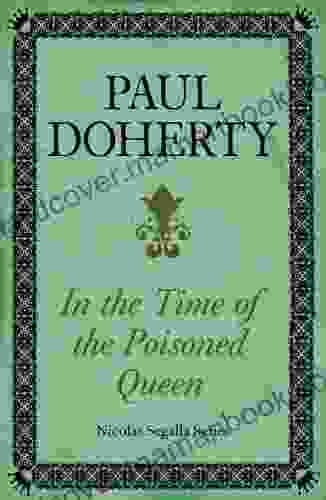
 Raymond ChandlerIn Time of the Poisoned Queen by Nicholas Segalla: A Gripping Historical...
Raymond ChandlerIn Time of the Poisoned Queen by Nicholas Segalla: A Gripping Historical...
 Owen SimmonsLearning, Teaching, and Musical Identity: Exploring the Interconnectedness of...
Owen SimmonsLearning, Teaching, and Musical Identity: Exploring the Interconnectedness of...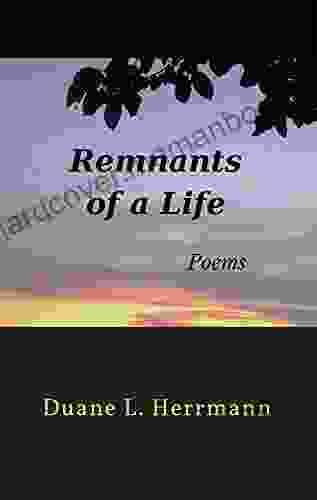
 Patrick RothfussRemnants of Life: Unraveling the Profound Meanings Hidden Within Timeless...
Patrick RothfussRemnants of Life: Unraveling the Profound Meanings Hidden Within Timeless... Rodney ParkerFollow ·16.9k
Rodney ParkerFollow ·16.9k Ibrahim BlairFollow ·11.4k
Ibrahim BlairFollow ·11.4k Brayden ReedFollow ·10.1k
Brayden ReedFollow ·10.1k Gus HayesFollow ·8.3k
Gus HayesFollow ·8.3k David PetersonFollow ·18.3k
David PetersonFollow ·18.3k Ricky BellFollow ·6.8k
Ricky BellFollow ·6.8k Ernesto SabatoFollow ·14.8k
Ernesto SabatoFollow ·14.8k Jace MitchellFollow ·13.6k
Jace MitchellFollow ·13.6k

 Eugene Powell
Eugene PowellComplete Guide to Using Yoga With Kids: Benefits, Tips,...
Yoga is an ancient practice that has been...

 Benji Powell
Benji PowellHow to Make $000 Per Week on Craigslist
Are you looking for a way to make extra money...

 Gabriel Garcia Marquez
Gabriel Garcia MarquezGrocery Row Gardening: The Exciting New Permaculture...
Kick-start your gardening journey with the...
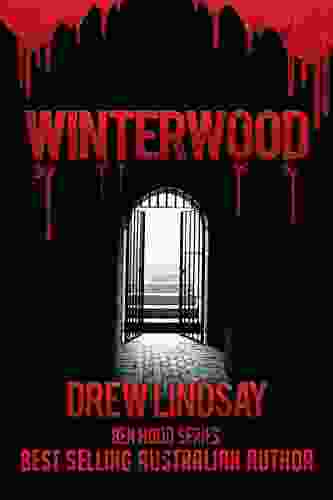
 Hayden Mitchell
Hayden MitchellUnveiling the Gripping World of Winterwood: Ben Hood...
In the annals of crime thrillers, the...

 E.M. Forster
E.M. ForsterThe Financial Advisor Guide To Managing and Investing...
As a financial...
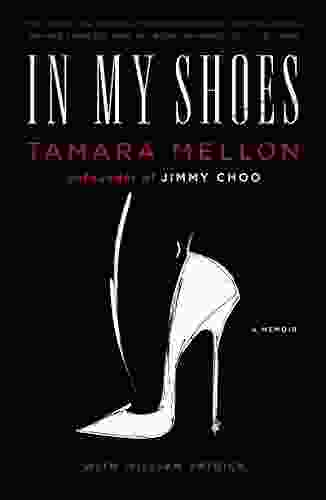
 Lee Simmons
Lee SimmonsIn My Shoes Memoir: A Poignant Journey of Resilience,...
In the tapestry of life, adversity often...
4.5 out of 5
| Language | : | English |
| File size | : | 507 KB |
| Text-to-Speech | : | Enabled |
| Screen Reader | : | Supported |
| Enhanced typesetting | : | Enabled |
| Print length | : | 256 pages |





